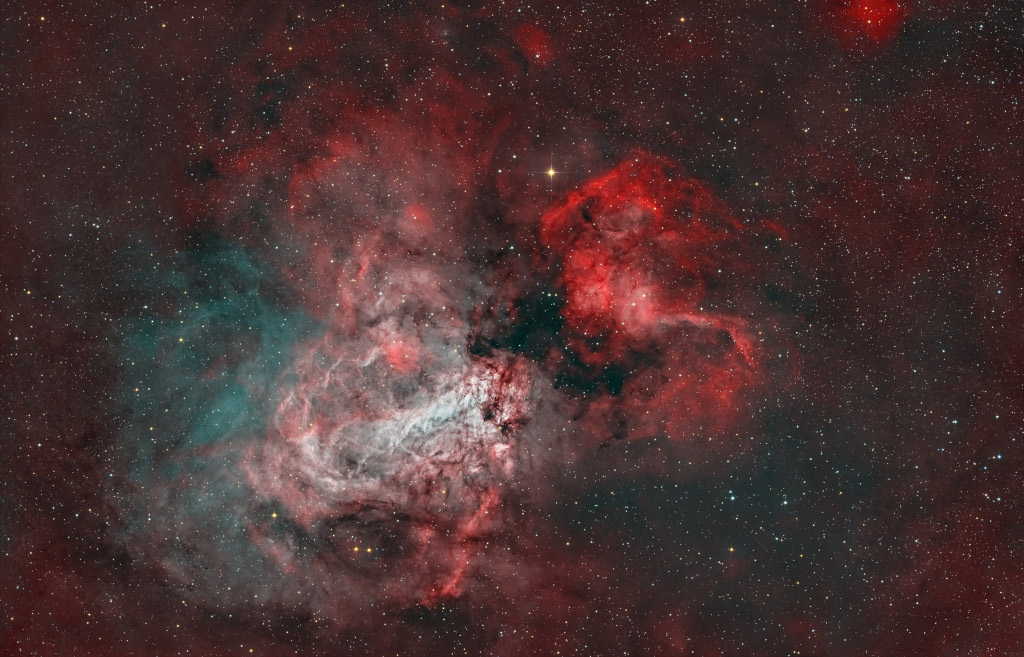
A nearby star factory known as Messier 17 lies some 5,500 light-years away in the nebula-rich constellation Sagittarius. At that distance, this 1.5 degree wide field-of-view would span about 150 light-years. In the sharp color composite image faint details of the region's gas and dust clouds are highlighted with narrowband image data against a backdrop of central Milky Way stars. The stellar winds and energetic radiation from hot, massive stars already formed from M17's stock of cosmic gas and dust have slowly carved away at the remaining interstellar material, producing the nebula's cavernous appearance and the undulating shapes within. A popular stop on telescopic tours of the cosmos, M17 is also known as the Omega or the Swan Nebula.
from NASA https://ift.tt/vqL9p18
Comments
Post a Comment